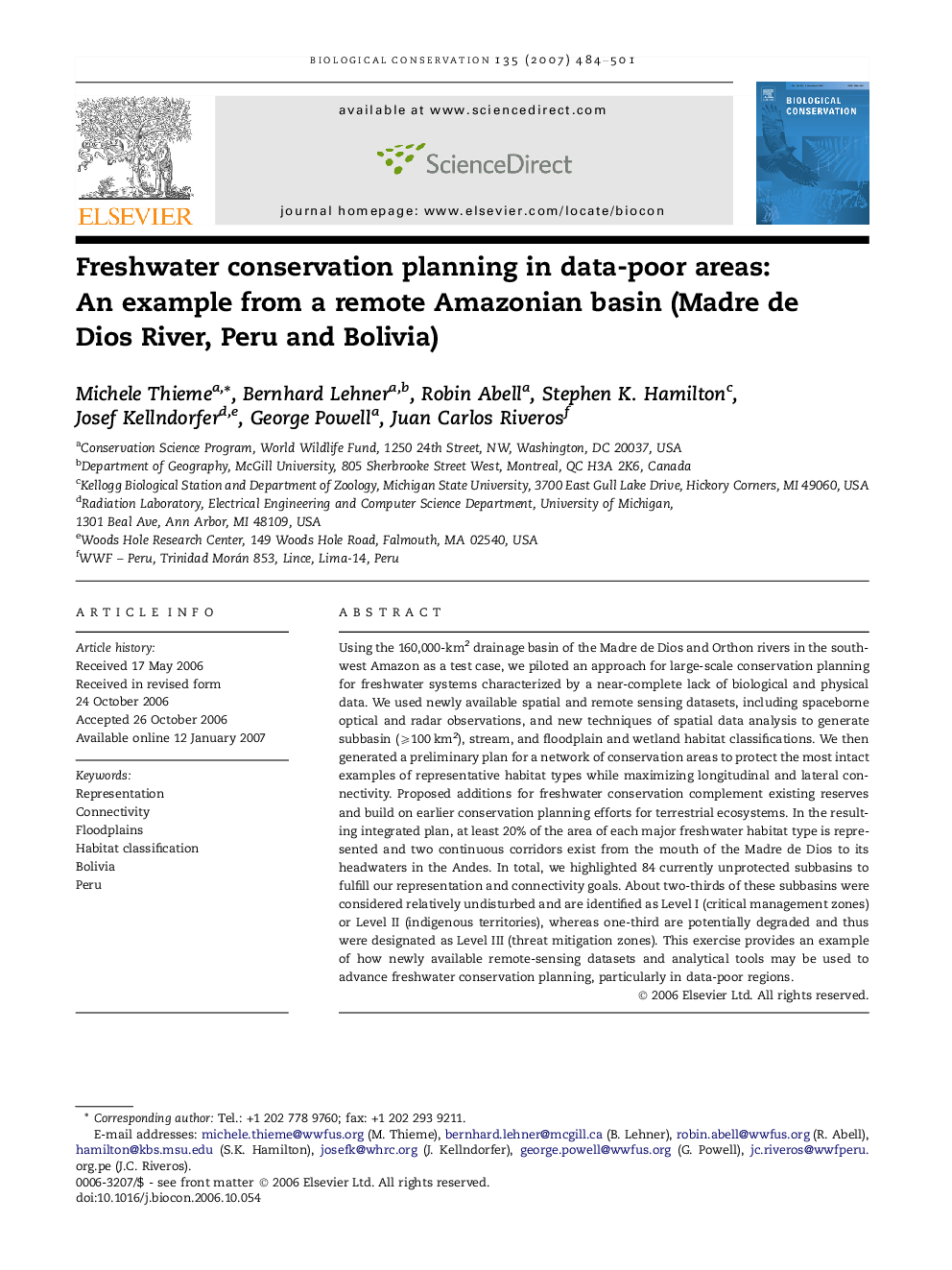| Article ID | Journal | Published Year | Pages | File Type |
|---|---|---|---|---|
| 4387276 | Biological Conservation | 2007 | 18 Pages |
Using the 160,000-km2 drainage basin of the Madre de Dios and Orthon rivers in the southwest Amazon as a test case, we piloted an approach for large-scale conservation planning for freshwater systems characterized by a near-complete lack of biological and physical data. We used newly available spatial and remote sensing datasets, including spaceborne optical and radar observations, and new techniques of spatial data analysis to generate subbasin (⩾100 km2), stream, and floodplain and wetland habitat classifications. We then generated a preliminary plan for a network of conservation areas to protect the most intact examples of representative habitat types while maximizing longitudinal and lateral connectivity. Proposed additions for freshwater conservation complement existing reserves and build on earlier conservation planning efforts for terrestrial ecosystems. In the resulting integrated plan, at least 20% of the area of each major freshwater habitat type is represented and two continuous corridors exist from the mouth of the Madre de Dios to its headwaters in the Andes. In total, we highlighted 84 currently unprotected subbasins to fulfill our representation and connectivity goals. About two-thirds of these subbasins were considered relatively undisturbed and are identified as Level I (critical management zones) or Level II (indigenous territories), whereas one-third are potentially degraded and thus were designated as Level III (threat mitigation zones). This exercise provides an example of how newly available remote-sensing datasets and analytical tools may be used to advance freshwater conservation planning, particularly in data-poor regions.
